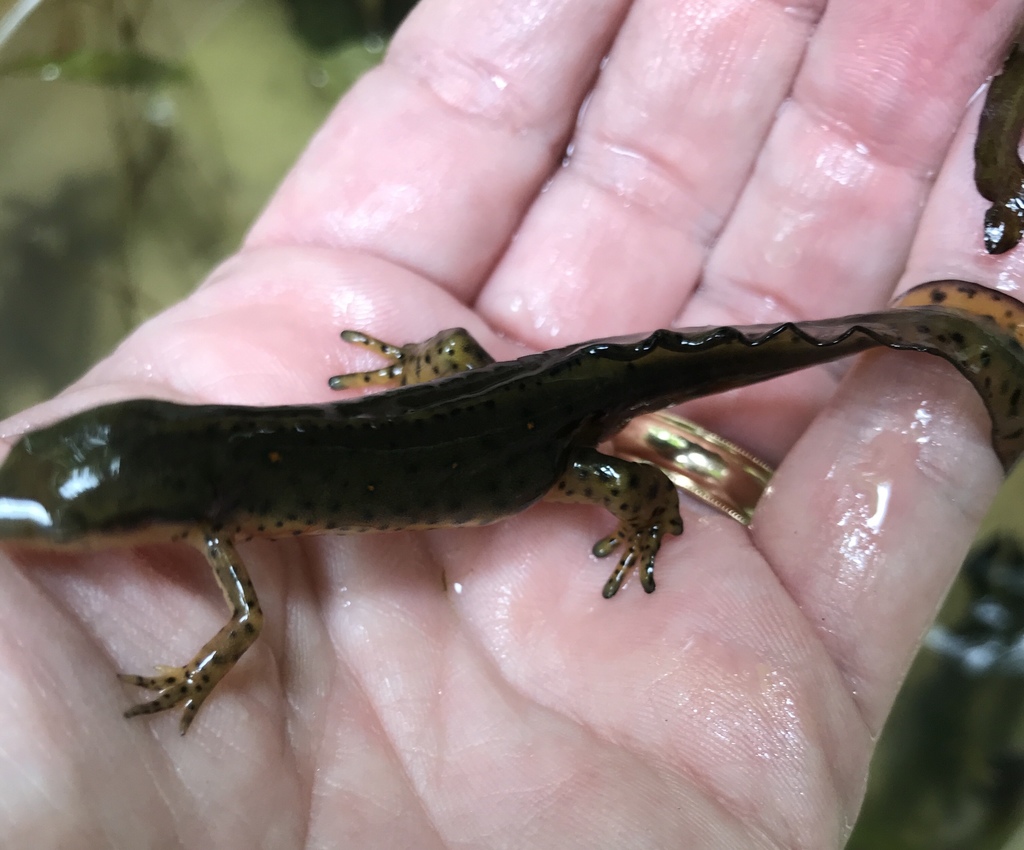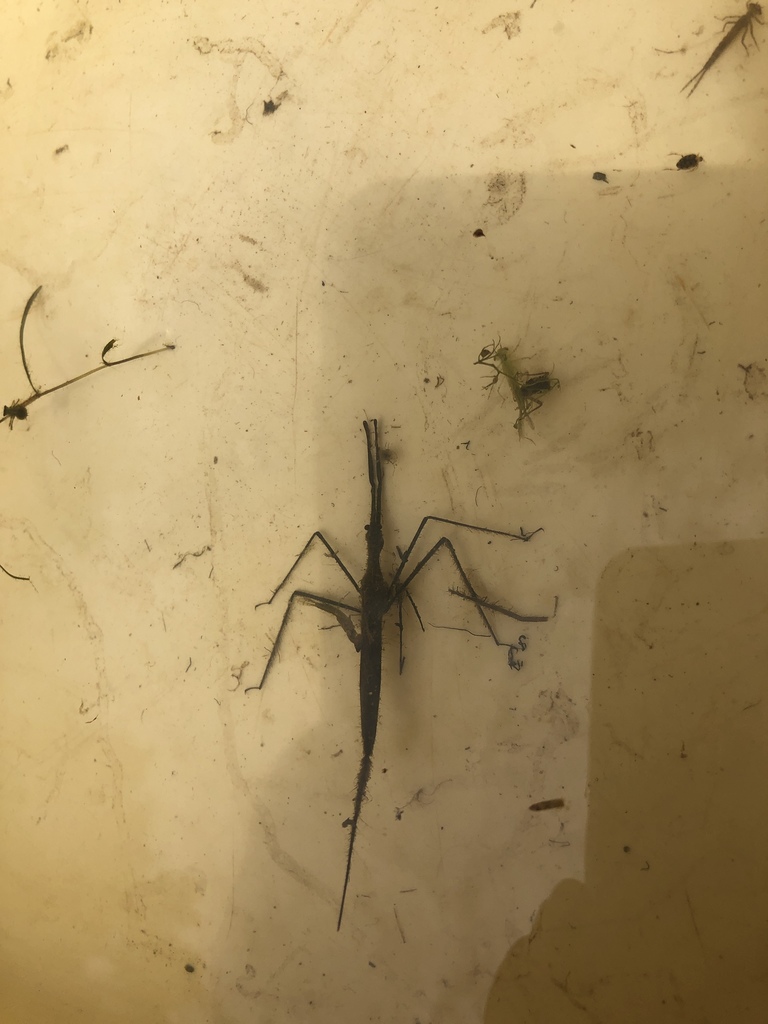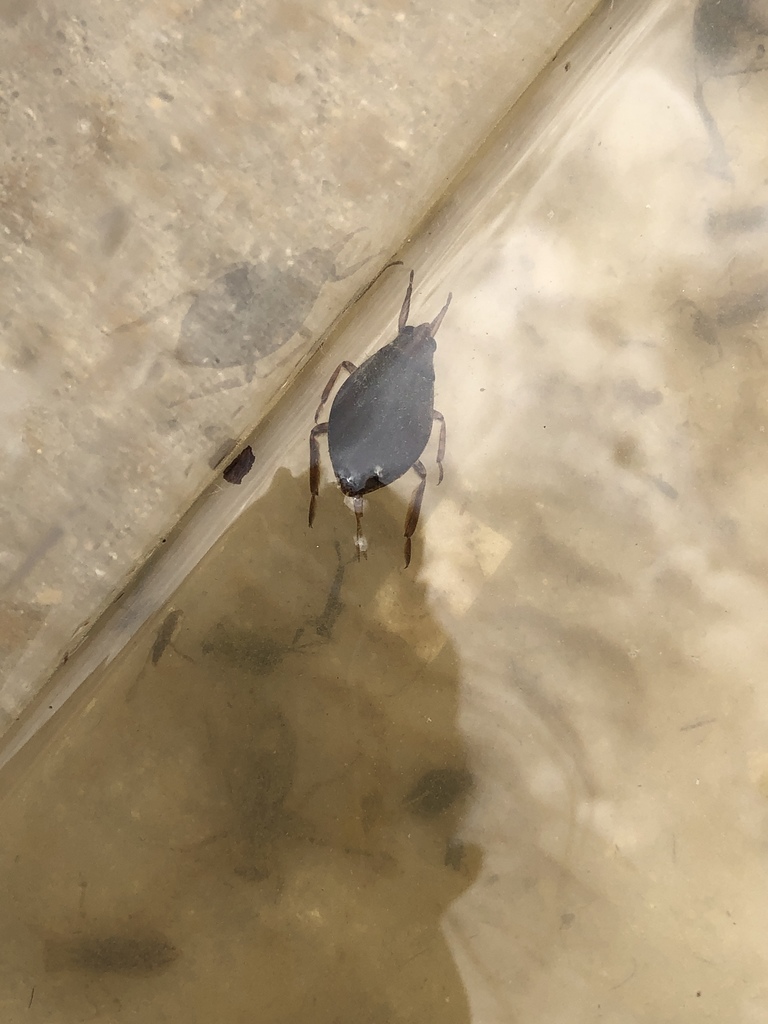
We’ve heard about a few of your vernal pool trips this week!
Some of you joined us virtually for a Zoom field trip today. We livestreamed from the vernal pool on the Cucumbertree trail in Athens. We saw:
- bullfrog tadpoles,
- dragonfly exuvia,
- red-spotted newts, and
- a 4-inch-long water scorpion.
We share some of what we learned below. Like: how some frogs breathe through their skins, but some insects breathe through their butts.
Other people took their own trips. Take a short video trip with our friends, Juni and Maggi!
Juni and Maggi showed us how they find living organisms in their pond, and how they used iNaturalist to identify them.
What species did they find? How does it fit into the food web of the pond? If you like, do a little research and tell us what you figure out.
You can also explore more Ohio wetlands through these 360 photos here.
Questions to ponder from the field…
People asked a lot of great questions on our virtual field trip today. Here are few things we talked about!
What happens to the life in the vernal pool once it dries up?
Some species, like tadpoles and dragonfly larvae, grow up and leave. They become adult frogs and dragonfly, and can hop and fly away.
Others, like fairy shrimp, will die when the pool dries up. But first, they will lay eggs that can survive. Next year, when the spring rains fill the pool again, those eggs will hatch!
Some of the species we know very little about. You might have to study them yourself to discover the answer of how they survive!
How do insects, like dragonfly larvae, breathe under the water?
Dragonfly larve have gills inside their butt! They suck water through them. They also can move around by shooting water out of the same place, like a jet pack.
Water scorpions carry a little bubble of air on their abdomen. Their long, needle-like tail pokes above the water, and then air travels down that tail to their bubble.

What happens to a tadpole’s tail when it becomes a frog?
Tadpoles reabsorb the tail back into their body when they become frogs. They use a lot of food and energy to make the tail, so they don’t want to waste it!
There is a special chemical called an enzyme that helps the tail absorb. Scientists discovered that this enzyme might work as a medicine against cancer. It can help break down the cancer just like it breaks down a tadpole tail!
How can I help protect vernal pools?
Vernal pools used to be the most common kind of wetland in Ohio, but there are not nearly as many of them as there used to be. Some species cannot survive without them. So it is important to protect them!
Some people were interested in building their own vernal pools. If you have enough space for one, your family can! If you have clay soil, all you really need to do is dig a shallow hole that water gathers in. Here is a guide, and here is a mini-version.
The rest of us can support protecting natural areas, like in parks and preserves.
Have more questions? Just ask!
